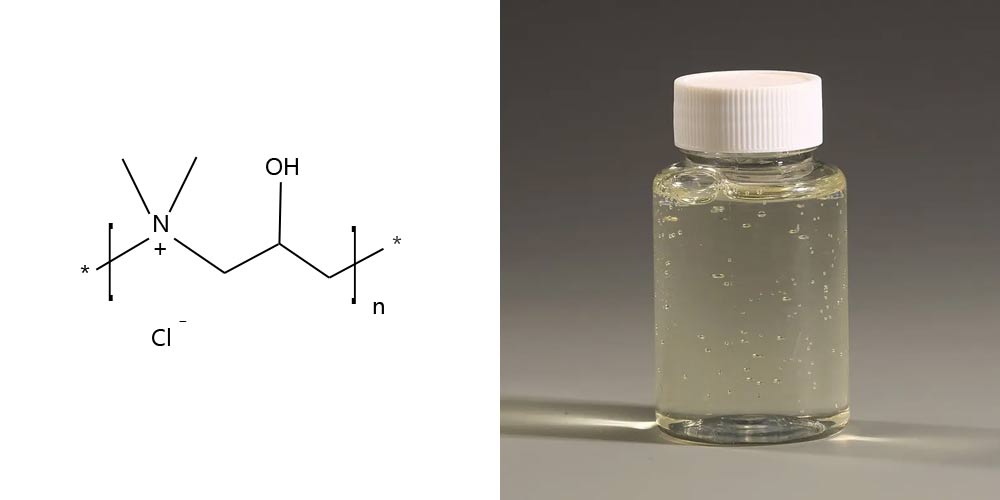Polyamine, een essentieelkationische polyelektrolyt, werkt als een krachtig middel in diverse toepassingen dankzij zijn unieke eigenschappen en mechanismen. Laten we eens dieper ingaan op de werking van polyamine en de veelzijdige toepassingen ervan verkennen.
Kenmerken en toepassingen van polyaminen:
Polyamine is een lineair homopolymeer dat zich kenmerkt door een uitstekende oplosbaarheid in water en compatibiliteit, waardoor het zeer veelzijdig is in verschillende industrieën. Door zijn stabiele karakter is het ongevoelig voor pH-schommelingen en bestand tegen chloorafbraak, waardoor het een ideale keuze is voor een breed scala aan toepassingen. Bovendien is polyamine bestand tegen hoge temperaturen en hoge druk, evenals tegen chloor of hogesnelheidsafschuiving, wat optimale prestaties garandeert in veeleisende omgevingen.
Polyamine is bovendien niet giftig, maar kan wel irritatie aan de huid en ogen veroorzaken. Daarom is het belangrijk om het product op de juiste manier te gebruiken en de juiste veiligheidsmaatregelen te treffen.
Werkingsmechanisme van polyaminen:
Wanneer polyamine als flocculant wordt gebruikt, functioneert het via een mechanisme dat bestaat uit elektrostatische neutralisatie en adsorptiebrugvorming. De effectiviteit van polyamine als flocculant correleert met het molecuulgewicht van het polymeer, de mate van kationiciteit en de mate van vertakking. Een hoger molecuulgewicht, kationiciteit en vertakking resulteren in superieure prestaties. Bovendien vertoont polyamine coördinatiecapaciteiten, die met name tot uiting komen in combinatie met PAC (polyaluminiumchloride), wat resulteert in synergetische effecten en een verbeterde efficiëntie.
In praktische toepassingen zijn het gebruik en de dosering van polyamine vergelijkbaar met die van PA (polyacrylamide) en PDADMAC (polydiallyldimethylammoniumchloride). Polyamine heeft echter een hogere ladingsdichtheid, een lager molecuulgewicht, meer restmonomeren en unieke structurele eigenschappen in vergelijking met PA en PDADMAC.
Polyamine in samenwerking met PAC:
Polyamine is opmerkelijk effectief in het verwijderen van organisch materiaal en pigmenten uit het recirculerende water of afvalwater van pulp- en papierfabrieken. In combinatie met PAC verbetert polyamine het coagulatieproces, wat resulteert in een verbeterde verwijdering van troebelheid en een lagere dosering PAC. Deze samenwerking onderstreept de synergie tussen polyamine en PAC in waterzuiveringstoepassingen.
Verpakking en opslag:
Polyamine wordt doorgaans verpakt in kunststof vaten van 210 kg of IBC-tanks (Intermediate Bulk Container) van 1100 kg. Het moet worden opgeslagen in een droge, goed geventileerde ruimte bij kamertemperatuur, waardoor een houdbaarheid tot 24 maanden wordt gegarandeerd.
Concluderend komt polyamine naar voren als een veelzijdige oplossing met diverse toepassingen in waterzuivering, olie-waterscheiding en afvalverwerking. De unieke eigenschappen en de samenwerking met andere verbindingen maken het een onmisbaar instrument in diverse industriële omgevingen en dragen bij aan een verbeterde efficiëntie en duurzaamheid.
Onze unieke en uitgebreide ervaring in delevering en gebruik van polyamineis van bijzonder belang voor onze klanten op het gebied van ondersteuning en expertise bij het optimaliseren van processen en operationele economie. Neem contact met ons op als u dit product nodig heeft.
Plaatsingstijd: 02-09-2024


